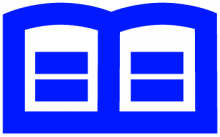Cost efficiency is the goal, but when it comes to transforming their operating models, many investment firms aren’t asking the right questions.
With a strong focus on explicit costs – vendor contracts, licensing fees, system migrations – it can be easy to overlook hidden costs. The real question isn’t just about what you’re spending today— it’s about what your current and potential operating model will cost you in the future.
This is where total cost of ownership (TCO) analysis is key. A strategic TCO approach gives firms a comprehensive understanding of the costs – and, therefore, the benefits – of various operating models, enabling you to design one that best suits your firm’s growth goals. By following a structured TCO analysis, firms can navigate expansion and ensure their infrastructure can scale predictably with a more transparent cost base.
Peter Sherriff
Director of Product Strategy, APAC
Charles River Development
The hidden costs that drain margins
TCO analysis isn’t limited to the cost of third-party technology and services alone. It accounts for costs that only become apparent when they start affecting margins. The longer these hidden expenses are overlooked, the harder they are to control. A few common examples include:
- Process improvement budgets: Whether to support new products, expand into new markets or adhere to new regulations, change is constant and costly.
- Personnel acquisition costs: Hiring, onboarding , administrative and training costs can quickly add up, especially when the business expects to grow substantially.
- Shadow work: Employees performing unofficial roles that utilize significant time but are not part of their key productive responsibilities.
While many explicit costs can be easily quantified, these hidden costs are much harder to identify and measure. As a result, they can often be overlooked in decision-making. The complexity of an organization’s operating model also increases the likelihood of unseen costs accumulating in the background. Meanwhile, smaller firms that experience rapid assets under management (AUM) growth may find themselves constrained by their operating models, making sustainable growth feel out of reach.
The longer these hidden expenses are overlooked, the harder they are to control.
Three steps to smarter TCO analysis
TCO analysis requires asking the right questions about your business to design an operating model that can evolve with your firm.
Drawing from our experience of working with complex institutional investors on front-to-back solutions that encompass platform and services, we have adopted a structured approach that compares current cost trajectory with the potential costs and savings of the operating models you are assessing.
- Define the scope and horizon
Before making decisions, firms need to define the expenses and time horizon applicable to all scenarios under consideration. This common denominator allows for direct comparisons between potential models. Key questions include:
- What is the time horizon? Align the analysis with your growth strategy by evaluating your 5-year and 10-year plans.
- What costs are variable versus fixed? Consider internal costs alongside vendor fees.
- Compare future-state scenarios
With a clear scope in place, firms can analyze different operating model choices. This means projecting your costs under various scenarios within the defined timeline. Key questions include:
- When do you expect to retire systems?
- How do potential transformations impact staffing costs?
- What is the break-even point for each potential transformation?
At this stage, many firms prioritize focusing on vendor proposals without factoring in the cost of retained internal operations. A model that appears cost-efficient today could become a financial burden tomorrow if it lacks the flexibility to scale with the business.
- Analyze and stress-test the results
Markets shift, regulations evolve and business models change. A robust TCO analysis accounts for these moving parts, attributing savings and stress-testing projections. Consider the following:
- How do different AUM growth rates affect the cost structure?
- What is the impact of retiring legacy systems earlier or later than expected?
- How does the proportion of retained operational resources change?
Many firms prioritize focusing on vendor proposals without factoring in the cost of retained internal operations
The smartsourcing advantage
When evaluating operating models, firms often default to a binary choice – keep processes in-house or outsource them entirely. Both approaches have limitations. Traditional outsourcing creates rigid cost structures that can be difficult to scale, while retaining everything in-house can lead to rising operational costs, internal staffing pressures and other inefficiencies.
Smartsourcing offers a hybrid approach. By striking an optimal balance between internal and outsourced resources, firms can retain control of their operations while maintaining the flexibility to scale each function as needed.
Why smartsourcing makes sense for TCO optimization:
- Scalability on demand: Smartsourcing allows firms to expand into new asset classes or geographies without overhauling operations.
- Cost transparency: Firms can scale resources in response to market conditions, reducing waste and inefficiencies.
- Enhanced control: Unlike full outsourcing, smartsourcing ensures firms can maintain oversight and governance over critical processes and change the degree of control based on what is critical at a given point in time.
- Faster time to market: By leveraging pre-integrated solutions, firms can move quickly without waiting to build in-house capabilities from scratch or committing indefinitely to an external provider.
TCO analysis as a growth enabler
TCO analysis is a strategic framework that helps firms build resilient, adaptable operating models and understand the true cost of those decisions. A structured approach allows firms to uncover all the costs associated with their current and potential operations, and design a solution that supports long-term success.
By accounting for hidden costs, modeling future-state scenarios and embracing a smartsourced model, firms can achieve both efficiency and agility, ensuring that their operating model sustains long-term growth.
Contact Us
To learn more about Charles River IMS or to schedule a demo.
7843850.1.1.GBL.
The material presented is for informational purposes only. The views expressed in this material are the views of the author, and are subject to change based on market and other conditions and factors, moreover, they do not necessarily represent the official views of Charles River Development and/or State Street Corporation and its affiliates.


